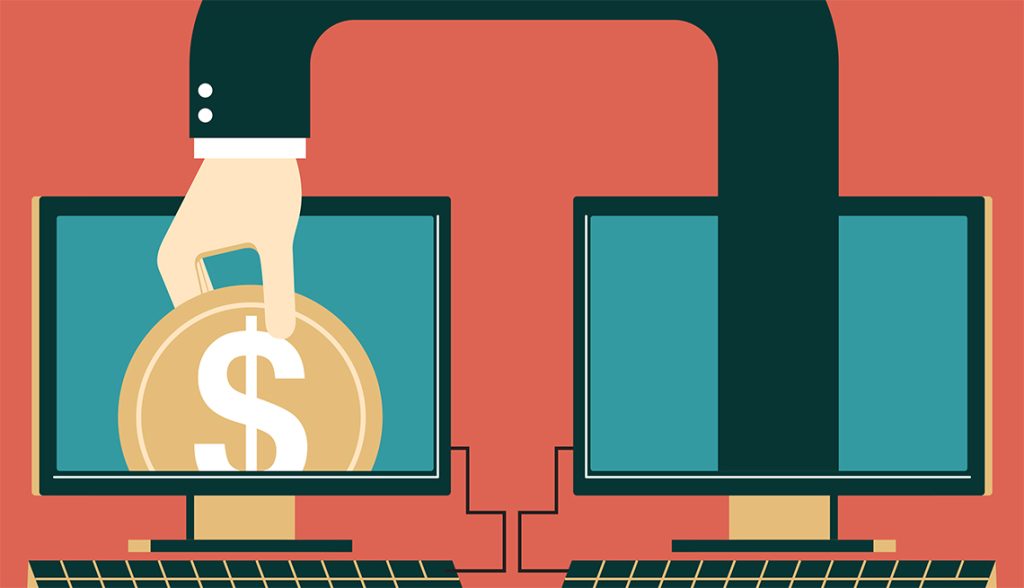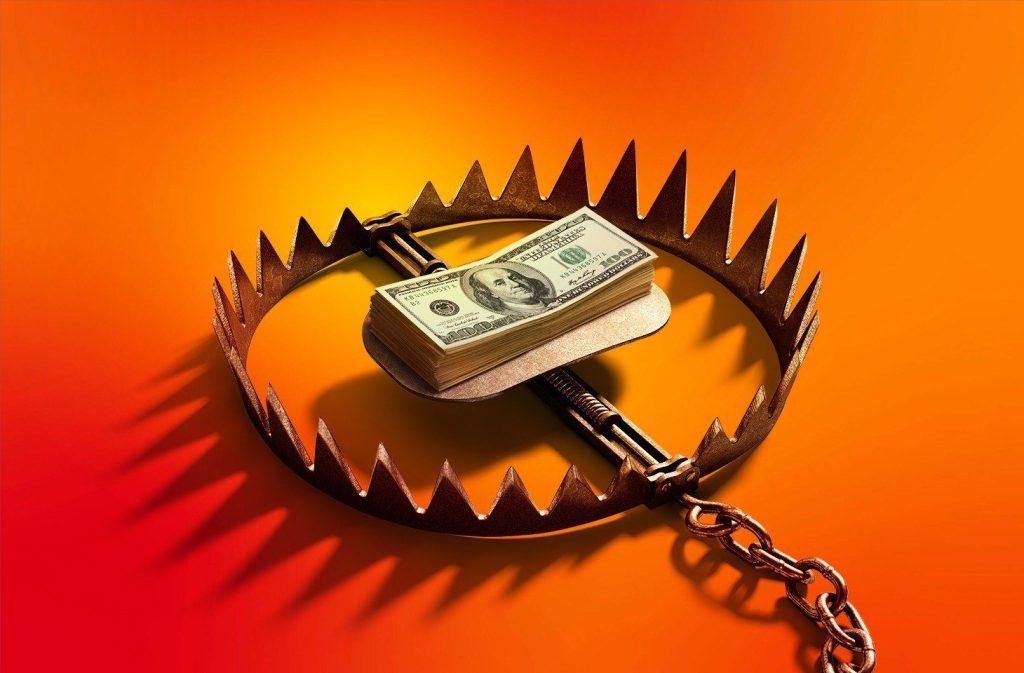The cryptocurrency industry offers immense opportunities for traders and investors, but it is also rife with scams. Among the most notorious frauds in the crypto space are rug pulls and exit scams—schemes that deceive investors into putting their money into a project before the developers suddenly disappear with the funds. These scams have cost traders billions of dollars over the years, making it crucial to understand how to identify red flags and avoid falling victim.
Want expert insights to protect your crypto investments? Join EPIQ Trading Floor today! Use code “BLOG” at checkout for 10% off your membership and gain access to real-time trade signals, Member’s only livestreams, and one-on-one coaching. Start your risk-free 3-day trial now—cancel anytime within 72 hours to avoid charges.
What Are Rug Pulls and Exit Scams?
A rug pull occurs when developers create and promote a cryptocurrency project, attract investors, and then suddenly withdraw all liquidity or disappear with the funds. This typically happens in decentralized finance (DeFi) projects, new token launches, and NFT collections.
An exit scam follows a similar model but often involves more elaborate deception. Scammers may operate a seemingly legitimate project for months before executing the fraud by shutting down all communication channels and leaving investors with worthless tokens.
These schemes have become more common in DeFi due to the lack of regulation and the ease of launching tokens on automated market makers (AMMs) like Uniswap, PancakeSwap, and SushiSwap. With anonymous teams and no investor protections, rug pulls and exit scams have become a persistent threat in crypto markets.

Types of Rug Pulls in Crypto
Liquidity Theft (Hard Rug Pulls)
Liquidity theft happens when developers create a token, list it on a decentralized exchange (DEX), and pair it with a valuable cryptocurrency like Ethereum (ETH) or Binance Coin (BNB). Investors purchase the new token, increasing its value. Once a significant amount of money is locked in the liquidity pool, the developers remove all liquidity, leaving holders with worthless tokens that cannot be traded. A notable example of this was the Squid Game Token scam in 2021, where developers drained approximately $3.3 million from investors by pulling liquidity after a massive price surge.
Developer Dumping (Soft Rug Pulls)
In developer dumping, project founders allocate a large portion of the token supply to themselves and gradually sell off their holdings as the price rises. Once the price reaches a peak, developers dump the remaining supply, causing the token’s value to crash. Unlike liquidity theft, these projects may not vanish immediately but eventually fade into irrelevance. The Thodex exchange exit scam exemplifies this tactic, with its CEO fleeing with over $2 billion in investor funds, making it one of the largest crypto frauds in history.
Fake Partnerships and Hype-Driven Scams
Some projects lure investors by announcing fake partnerships with major companies or celebrity endorsements. These scams rely on aggressive marketing and social media influencers to create FOMO (Fear of Missing Out). Once enough people invest, the scammers disappear with the funds. The Bitconnect Ponzi Scheme followed this pattern, promising high returns using a “trading bot” before collapsing in 2018, causing investors to lose over $2 billion.
How to Identify a Potential Rug Pull
Recognizing the warning signs of rug pulls and exit scams is essential for protecting your investments. One of the biggest red flags is an anonymous or unverified development team. Many scams are launched by developers who hide their identities, making it difficult to hold them accountable. Legitimate projects typically have publicly known founders, active LinkedIn profiles, and past experience in blockchain development.
Another indicator of a potential rug pull is the lack of a smart contract audit or code transparency. Trustworthy projects undergo audits from security firms like CertiK or Hacken, which help verify that the smart contract does not contain vulnerabilities or malicious code. If a project refuses to publish its audit results, it could be concealing mechanisms that allow developers to manipulate the contract.
Investors should also be wary of unsustainable high yields and unrealistic returns. Projects promising “10,000% APY staking rewards” often function as Ponzi schemes designed to attract new investors, with earlier participants profiting from later entrants. While legitimate DeFi platforms may offer high yields, they typically have real revenue sources and market demand backing them.
Checking for liquidity locks and token utility is another crucial step. If the developers retain control over most of the token supply, they can easily manipulate the price and dump their holdings. Reputable projects often lock liquidity using platforms like Unicrypt or Team Finance to prevent sudden withdrawals.
Finally, sudden project abandonment is a significant warning sign. If developers stop posting updates, disable comments on social media, or delete Telegram and Discord channels, it is a strong indication of an impending exit scam. Legitimate projects maintain consistent development progress and community engagement over time.

How to Protect Yourself from Crypto Scams
To safeguard against rug pulls and exit scams, always practice DYOR (Do Your Own Research). Before investing, verify the team behind the project, check for smart contract audits, and review community discussions on platforms like Twitter, Discord, and Reddit. A strong, engaged community is often a good sign of legitimacy.
Additionally, checking liquidity locks and token distribution can provide insight into a project’s trustworthiness. Use blockchain explorers like DEXTools and BscScan to confirm whether liquidity is locked and analyze how tokens are distributed among wallets. If a single wallet holds a disproportionately large share, the risk of a developer dump is high.
Avoid investing based on hype-driven FOMO, as many scams use aggressive marketing tactics to lure investors. Be skeptical of projects that gain rapid popularity without a well-documented roadmap or a clear use case. Sticking to reputable exchanges and wallets also reduces exposure to fraudulent schemes. Major platforms like Binance, Coinbase, and Kraken employ rigorous security measures, while non-custodial wallets such as MetaMask and Ledger provide greater control over assets.
Finally, monitoring unusual market activity can help detect scams before they unfold. Sudden price surges followed by rapid dumps are classic signs of a pump-and-dump scheme. If a token experiences parabolic growth with little real-world adoption, it is likely being manipulated.
The Future of Crypto Security and Scam Prevention
As the crypto industry matures, regulators and security firms are working to prevent rug pulls and exit scams. Organizations like the SEC (Securities and Exchange Commission) and FATF (Financial Action Task Force) are introducing compliance measures to monitor suspicious projects and protect investors.
Decentralized identity verification systems and mandatory smart contract audits are becoming standard in the industry. Blockchain security firms are also developing real-time scam detection tools, helping traders identify fraudulent projects before investing. Despite these advancements, investor education remains the best defense against crypto scams.

Stay Ahead with EPIQ Trading Floor
Navigating the crypto market requires ongoing education and expert insights. At EPIQ Trading Floor, we provide real-time trade signals to help you identify profitable opportunities while avoiding scams. Our Member’s Only Livestreams allow you to learn directly from expert traders, and our exclusive mobile app provides access to market trends and trading strategies. If you need personalized guidance, our one-on-one coaching sessions ensure you stay ahead in the evolving crypto space.
Join today and use code “BLOG” at checkout for 10% off your membership. Enjoy a risk-free 3-day trial and cancel anytime within the trial period without being charged.
Conclusion
Rug pulls and exit scams continue to pose significant risks in the crypto industry, but they can be avoided with careful research and due diligence. By recognizing warning signs, using reputable trading platforms, and staying informed, traders can protect their assets from fraudulent schemes. As security tools improve and regulations evolve, the crypto space will become safer, but individual vigilance remains the best defense against scams.
Stay ahead of crypto fraud and market trends—join EPIQ Trading Floor today and take control of your trading success!
Disclaimer: The content provided in this article is for informational purposes only and does not constitute financial advice. Cryptocurrency investments involve significant risks, and you should consult a financial advisor before making any investment decisions.










Responses